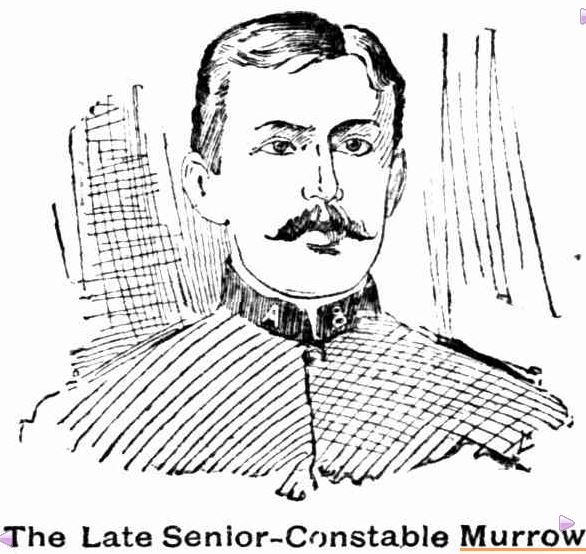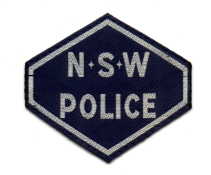Henry Stark MURROW
Henry Stark MURROW
New South Wales Police Force
Regd. # 4471
Rank: Senior Constable
Stations: Phillip Street Police Station ( No. 4 Division )
Service: From 9 June 1883 to 5 October 1897 = 14+ years
Awards: ?
Born: 1861 in England
Event date: 4 October 1897
Event location: the vicinity of Argyle Street, The Rocks
Died on: 5 October, 1897 around 12.30am
Cause: Assault – blood clot on the brain
Age: 35
Funeral date: 6 October 1897 @ 3pm
Funeral location: Waverley Cemetery
Buried at: Waverley Cemetery
Memorial: https://dev.australianpolice.com.au/eastern-suburb…olice-memorial/
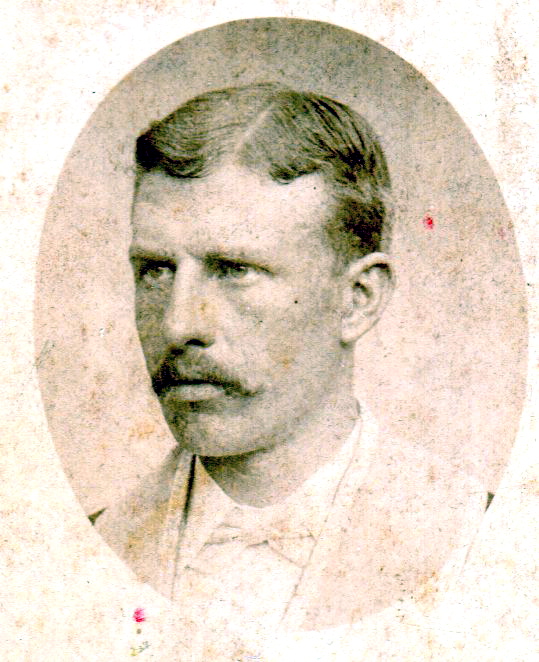
HENRY IS mentioned on the Police Wall of Remembrance
On 4 October 1897 Constable Murrow attempted to arrest a man by the name of Daniel Conway in the vicinity of Argyle Street, The Rocks. During the scuffle the constable fell to the ground, heavily striking his head. Taken to the Sydney Hospital and treated for what was thought to be merely a scalp wound, the constable was allowed to return to his home. Later that night he became very ill and died. It was subsequently found that he had suffered a fractured skull. Although Conway was charged with murder he was later convicted of manslaughter and sent to gaol.
The Sydney Morning Herald of 7 October, 1897 described the constable’s inquest and funeral, concluding with the following:
The funeral of the deceased took place yesterday afternoon. The procession, which included 160 members of the police force in uniform and a number of Freemasons, left the deceased’s late residence, at 117 Underwood Street, Paddington, shortly before 3 o’clock, and proceeded to Waverley Cemetery, where the interment took place. The coffin was covered with floral tributes. The Police Band played the Dead March en route. At the grave a special Masonic service was read, as well as the usual burial service. Amongst the officers of the department who were present were Superintendent Head, Inspectors Bremner, Potter and Lawless, and Sub-inspectors Scott and Elliott. In the funeral procession there were also a large number of civilians.
The senior constable was born in 1861 and joined the New South Wales Police Force on 9 June, 1883. At the time of his death he was stationed at Phillip Street Police Station, Sydney.
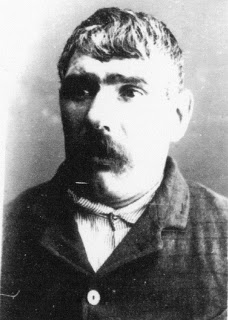
Police death in the course of duty
Senior Constable Henry Murrow (1869–1897) of No 4 Station died from an injury received on duty. Born in England, Murrow had settled with his parents in New Zealand where he joined the New Zealand Police Force before moving to Sydney and joining the NSW Police Force in 1883.
On 4 October 1897, Murrow, while on duty in The Rocks was hailed by Jane Jones, publican of the Orient Hotel who was having trouble with a drunken patron, Daniel Conway. Jones asked Murrow to move Conway along. This he did, requesting that Conway go home. Conway left with another man, walking south along George Street, closely followed by Murrow, as witnessed by George Howlett. Nearing the Port Jackson Hotel (now the Russell Hotel) on the corner of Globe Street, Conway’s companion was swearing, at which point Murrow overtook them and clasped his hand on the man’s shoulder. This resulted in a fight during which Murrow struck his head on the woodblock paving of George Street. Howlett intervened, helping Murrow to his feet. Conway then fled back towards Argyle Street and Howlett assisted Murrow to the nearby No 4 Police Station.
Murrow was escorted to Sydney Hospital where wound was dressed. It appeared to be minor so Murrow was dismissed. Meanwhile Conway was delivered into the custody of water police Constable William Cleugh who took him to the Water Police Station in Phillip Street where he was charged with assaulting Morrow while he was on duty.
At 10.30pm at his home at Paddington, Murrow lost consciousness and died around 12.30am. Doctors were summoned and determined that he had concussion, an autopsy confirmed it. Conway, was charged with murder but convicted on the lesser charge of manslaughter and sentenced to six months hard labour at Darlinghurst Gaol.[9]
[9] Daily Telegraph, 7 and 8 October 1897
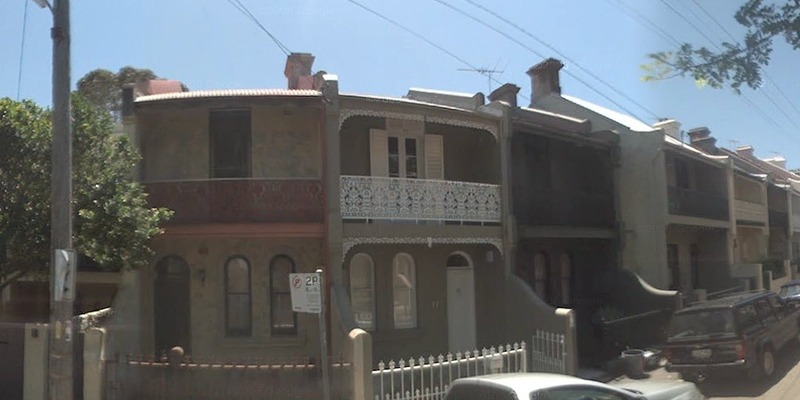
[divider_dotted]
Goulburn Evening Penny Post Thursday 7 October 1897 page 2 of 4
THE DEATH OF CONSTABLE MURROW.
The City Coroner, Mr. J. C. Woore, J.P., on Wednesday initiated an inquest into the circumstances touching the death of Senior-constable Henry Murrow. A somewhat painful scene occurred when the witnesses were called in to see the body identified. Mrs. Murrow, widow of the deceased, was present to identify the body, and when Daniel Conway, the young fireman, who attended the inquest in custody, was brought in a fit of uncontrollable indignation took possession of the bereaved woman, and she tried to get at close quarters with Conway. Evidence was then taken.
Caroline Barbara Murrow stated that deceased was her husband, was a native of England, and 32 years of age. He left three children, and no property. At 9.30 a.m. on the 4th instant he left home in his usual health to go on duty. He was home again about half-past 8 on the evening of that day, and when she came in at that time after having been out all day she found him lying on the bed in an unconscious condition and bleeding from a wound in the head. She applied carbolic oil to the wound, and bandaged deceased’s head. Dr. Walton Smith was sent for, and remained with her husband until he died. Dr. Quaife was also present at the time of his death.
Dr. Rennie, who in conjunction with Dr. Jameson had made a post-mortem examination of the body, stated that he found a star-shaped cut about 2in. in length on the back of the head. The cut penetrated to the bone, but the skull was not fractured. On opening the skull he found a large clot of blood compressing the left side of the brain, which was lacerated, and it was to this laceration of the brain that death was due.
Similar evidence was given by Dr. Jameson.
Dr. Smith stated that he was called in to see deceased on the night of the 4th instant, and at once came to the conclusion that he was dying, and suggested a consultation. Dr. Quaife was sent for, and together they saw deceased about 10.45 p.m. The took two stitches out of the scalp wound and found that there had been no fracture of the skull.
Jane Jones, a widow, and licensee of the Orient Hotel, corner of Argyle and George streets, ( The Rocks, Sydney ) stated that on the 4th instant, at about 12.45 p.m., she called deceased’s attention to the fact that Daniel Conway, the man in custody, was causing her annoyance. Murrow told Conway to go home, and the two went away in the same direction, Conway being about 10 yards in advance of Murrow. She did not see what happened subsequently.
George Howlett, a fireman employed on the steamship Echuca, stated that he saw Murrow following Conway and another man, and when deceased put his right hand on the latter’s shoulder Conway struck him twice. Deceased struck the other man and knocked him down. The latter then got up and ran away. Murrow then closed with Conway and tried to handcuff him. Conway struck him in the face and tripped him up. Deceased fell in the roadway, and his head struck the ground. Conway got up and ran away. In answer to Conway witness said that he saw deceased strike Conway after the latter had struck him.
Dr. W. H. Harris stated that he stitched the wound in deceased‘s head, but did not consider it serious enough to justify his detaining the man in the hospital. Murrow told him that he had slipped on an orange peel at Circular Quay. The inquest was then adjourned till 10 o’clock next day.
The funeral of the deceased took place in the afternoon. The procession, included 160 members of the police force in uniform and a number of Freemasons.
http://trove.nla.gov.au/ndp/del/article/104556039
Evening News ( Sydney )
Wednesday 6 October 1897 page 6 of 8
A Policeman Killed.
INQUEST ON MURROW.
TO-DAY’S PROCEEDINGS.
An inquest was commenced this morning at the United Service Hotel, Oxford-street, Paddington, on the body of Senior-Constable Henry Murrow, who died from injuries received near Circular Quay on Eight-hour Day.
Daniel Conway, who is alleged to have assaulted the constable, was present in custody, charged with having caused the death of Murrow.
Caroline Barbara Murrow stated that deceased was her husband, and resided with her at 117 Underwood-street, Paddington. He was 32 years of age, and left three children.
Dr. Rennie deposed that, in company with Dr. Jamieson, he yesterday afternoon made a post-mortem examination of the body. He found a star-shaped wound at the back of the head, extending about two inches in either direction, down to the bone. There were no other external marks of violence on the body. A large clot of blood beneath this wound was compressing the left side of the brain, and that side of the brain was lacerated. There was no fracture of the skull. The cause of death was laceration of the brain and compression of the brain by the blood-clot described.
Dr. Sydney Jamieson gave corroborative medical testimony. (Proceeding) .
http://trove.nla.gov.au/ndp/del/article/108879317
Evening News ( Sydney )
Wednesday 6 October 1897 page 6 of 8
A Policeman Killed.
INQUEST ON MURROW.
TO-DAY’S PROCEEDINGS.
An inquest was commenced this morning at the United Service Hotel, Oxford-street, Paddington, on the body of Senior-Constable Henry Murrow, who died from injuries received near Circular Quay on Eight-hour Day.
Daniel Conway, who is alleged to have assaulted the constable, was present in custody, charged with having caused the death of Murrow. Caroline Barbara Murrow stated that deceased was her husband, and resided with her at 117 Underwood-street, Paddington. He was 32 years of age, and left three children.
Dr. Rennie deposed that, in company with Dr. Jamieson, he yesterday afternoon made a post-mortem examination of the body. He found a star-shaped wound at the back of the head, extending about two inches in either direction, down to the bone. There were no other external marks of violence on the body. A large clot of blood beneath this wound was compressing the left side of the brain, and that side of the brain was lacerated. There was no fracture of the skull. The cause of death was laceration of the brain and compression of the brain by the blood-clot described. Dr. Sydney Jamieson gave corroborative medical testimony. (Proceeding.)
http://trove.nla.gov.au/ndp/del/article/108879317
Evening News ( Sydney )
Thursday 7 October 1897 page 6 of 8
THE INQUEST RESUMED.
TO-DAY’S PROCEEDINGS.
The inquest into the circumstances surrounding the death of Senior-constable Henry Murrow, who died on Monday night from injuries received while endeavoring to arrest a man near Circular Quay on that day, was resumed this morning at the United Service Hotel, Oxford Street, Paddington.
James Codd, grocer, living at 17 Market-street, said that he met deceased at about 11 o’clock on Monday morning, and remained with him until about half-past 12. During that time they had one drink each. He was perfectly sober. After warning two men about whom, he had received a complaint at the Orient Hotel deceased walked towards the station. On the way an altercation took place with Conway ( the man before the court ). Conway struck deceased, who returned the blow. They then closed and fell together, the constable being underneath. His feet seemed to slip from under him. Witness was about ten yards away at the time. Deceased tried to rise, but fell back, and blood came from his mouth. Conway ran towards Argyle Cut. Prior to Conway striking the constable the latter placed his hand on the shoulder of the other.
Charles Nolan, draper, at 247 George-street, deposed to running after Conway when the constable fell. He called to him to stop. Conway did so, and came back towards witness. Two members of the water police were in sight, and witness hailed them, and told them what had occurred. They took Conway to No. 4 Station.
Constable James Finn took deceased to the hospital. Witness described the attention which Murrow received there. After remaining ten or fifteen minutes deceased walked out, gave his address to the cabman, and proceeded home. Witness saw no blood issue from the mouth of deceased.
To Conway: I told the doctor at the hospital what deceased told me as to the cause of the injury. Deceased told me that he went to arrest a man, when another man came up, struck him, and knocked him down on the back of his head on the blocks. During the progress of the inquiry the accused Conway, who is a powerfully built fireman, and who gave his age as 26, cross-examining the various witnesses to show that he received provocation from the deceased. He appears to be deaf, and held his hand to his ear while the evidence was being tendered, apparently only half understanding the proceedings. When the answers to his questions were, not satisfactory, he hinted at the witnesses making false statements.
The taking of evidence was concluded at noon, and the coroner having briefly summed up, the jury retired to consider their verdict.
http://trove.nla.gov.au/ndp/del/article/108876766
Goulburn Evening Penny Post
Thursday 7 October 1897 page 2 of 4
THE DEATH OF CONSTABLE MURROW.
The City Coroner, Mr. J. C. Woore, J.P., on Wednesday initiated an inquest into the circumstances touching the death of Senior-constable Henry Murrow. A somewhat painful scene occurred when the witnesses were called in to see the body identified. Mrs. Murrow, widow of the deceased, was present to identify the body, and when Daniel Conway, the young fireman, who attended the inquest in custody, was brought in a fit of uncontrollable indignation took possession of the bereaved woman, and she tried to get at close quarters with Conway. Evidence was then taken.
Caroline Barbara Murrow stated that deceased was her husband, was a native of England, and 32 years of age. He left three children, and no property. At 9.30 a.m. on the 4th instant he left home in his usual health to go on duty. He was home again about half-past 8 on the evening of that day, and when she came in at that time after having been out all day she found him lying on the bed in an unconscious condition and bleeding from a wound in the head. She applied carbolic oil to the wound, and bandaged deceased’s head. Dr. Walton Smith was sent for, and remained with her husband until he died. Dr. Quaife was also present at the time of his death.
Dr. Rennie, who in conjunction with Dr. Jameson had made a post-mortem examination of the body, stated that he found a star-shaped cut about 2in. in length on the back of the head. The cut penetrated to the bone, but the skull was not fractured. On opening the skull he found a large clot of blood compressing the left side of the brain, which was lacerated, and it was to this laceration of the brain that death was due.
Similar evidence was given by Dr. Jameson.
Dr. Smith stated that he was called in to see deceased on the night of the 4th instant, and at once came to the conclusion that he was dying, and suggested a consultation. Dr. Quaife was sent for, and together they saw deceased about 10.45 p.m. The took two stitches out of the scalp wound and found that there had been no fracture of the skull.
Jane Jones, a widow, and licensee of the Orient Hotel, corner of Argyle and George streets, stated that on the 4th instant, at about 12.45 p.m., she called deceased’s attention to the fact that Daniel Conway, the man in custody, was causing her annoyance. Murrow told Conway to go home, and the two went away in the same direction, Conway being about 10 yards in advance of Murrow. She did not see what happened subsequently.
George Howlett, a fireman employed on the steamship Echuca, stated that he saw Murrow following Conway and another man, and when deceased put his right hand on the latter’s shoulder Conway struck him twice. Deceased struck the other man and knocked him down. The latter then got up and ran away. Murrow then closed with Conway and tried to handcuff him. Conway struck him in the face and tripped him up. Deceased fell in the roadway, and his head struck the ground. Conway got up and ran away. In answer to Conway witness said that he saw deceased strike Conway after the latter had struck him.
Dr. W. H. Harris stated that he stitched the wound in deceased’s head, but did not consider it serious enough to justify his detaining the man in the hospital. Murrow told him that he had slipped on an orange peel at Circular Quay. The inquest was then adjourned till 10 o’clock next day.
The funeral of the deceased took place in the afternoon. The procession, included 160 members of the police force in uniform and a number of Freemasons.
http://trove.nla.gov.au/ndp/del/article/104556039
The Maitland Daily Mercury
Thursday 7 October 1897 page 2 of 4
Benefits of Life Insurance.— One of the last acts performed by Constable Murrow before meeting with the injuries which caused his violent death at Circular Quay on Monday evening was the payment by him on Saturday last of the premium, then overdue, upon his life policy for £200 with the Mutual Life Association of Australasia. Strangely enough the policy had lapsed through non-payment of premium on the 1st of August but, thanks to the practice of the Mutual Life Office, a special letter was written to Murrow on the 14th ultimo, strongly urging him not to allow so valuable a provision for his family to be lost.
On 2nd instant, as above stated, the conditions necessary for reinstating the policy were complied with by the deceased, with the result that the general manager ( Mr. J. C. Remington ) has caused a notification to be sent to the widow that the amount of her late husband’s assurance is available immediately the necessary legal documents are forthcoming.
http://trove.nla.gov.au/ndp/del/article/122734090
The Sydney Morning Herald
Tuesday 19 October 1897 page 1 of 8
Return Thanks.
Mrs. C. R. MURROW, Paddington, desires to express her sincere THANKS to her late husband’s comrades and her many friends for their kind sympathy, floral wreaths, letters of condolence, &c., kindly sent her in her late sudden bereavement.
http://trove.nla.gov.au/ndp/del/article/14092346
Evening News ( Sydney )
Thursday 25 November 1897 page 5 of 8
EXTRA SPECIAL
” EVENING NEWS ” OFFICE. 3.30 p.m.
CHARGE OF MURDER. CONSTABLE MURROW’S DEATH. CONWAY ON TRIAL.
Daniel Conway, a fireman, was placed upon his trial before his Honor Judge Stephen at the Central Criminal Court this morning, the charge against him being that of having wilfully murdered Henry Murrow, a senior-constable in the police force of New South Wales, upon last Eight Hour Day. The case for the Crown, as stated in counsel’s opening address, was that Murrow had endeavored, while on duty in George-street North, near Circular Quay, to arrest a man who, it is alleged, was making use of indecent language. The prisoner, Conway, was in this man’s company, and offered resistance to the officer, who then endeavored to effect his arrest. A struggle ensued, in which both men fell to the ground, the constable being underneath. Murrow’s head struck the roadway with some force, and he lay there unconscious. Accused rose, looked at the prostrate man for a second or two, and then ran away. He was subsequently arrested.
Murrow was taken to the police station, and thence to the Sydney Hospital. He afterwards went home, but died the same night from laceration of the brain tissues, caused by the injury received.
Conway, who pleaded not guilty, was defended by Mr. J. C. Gannon, instructed by Mr. Mark Williamson. Mr. C. G. Wade prosecuted on behalf of the Crown.
James Codd, a grocer, stated that he had known deceased for about six years, and was in his company on the morning of last Eight-hour Day for about an hour and a half before the alleged assault. During that time they had one drink at an hotel. Murrow was perfectly sober. Witness saw accused assault deceased, who was endeavoring to arrest his mate.
George Howlett, a fireman of the steamer Echuca, stated that he was in George-street North on the day in question, and heard a man using indecent language. A constable endeavored to arrest him when accused, who was in the offender’s company, struck the officer. The senior-constable, Murrow, then released the first man, striking him at the same time, and turned his attention to accused, who hit him in the chest. Murrow put his hand behind him with the evident intention of disengaging his handcuffs, when Conway again hit him, tripping him at the same time. Murrow fell, and lay there insensible. (Proceeding.)
http://trove.nla.gov.au/ndp/del/article/108869565
Sunday Times ( Sydney )
Sunday 28 November 1897 page 10 of 12
THE KILLING OF CONSTABLE MURROW.
At the Central Criminal Court Daniel Conway was charged with the murder of Henry Murrow, constable of No. 4 Station. Murrow was making an arrest near the Quay, when Conway, it was said, interfered, and the officer was thrown, dying from laceration of the brain. The jury returned a verdict of manslaughter, with a strong recommendation to mercy. Mr. Justice Stephen sentenced Conway to six mouths with hard labor.
http://trove.nla.gov.au/ndp/del/article/126247165
The Sydney Morning Herald
Saturday 15 June 1889 page 1 of 20
MARRIAGE
MURROW—WALSH. — April 24, 1889, at Holy Trinity Church, Argyle-street, Sydney, by the Rev. Cecil King, Henry, eldest son of W. H. Murrow, of Napier, New Zealand, to Carrie Barbara, youngest daughter of the late Nicholas Walsh, of Argyle-street, Sydney.
http://trove.nla.gov.au/ndp/del/article/13740391
The Sydney Morning Herald
Tuesday 4 October 1898 page 1 of 8
MURROW-In loving memory of my dear husband, Henry Murrow, who was accidentally killed in Lower George street, 4th October, 1897, whilst in the execution of his duty.
http://trove.nla.gov.au/ndp/del/article/14144900
The Sydney Morning Herald
Saturday 4 October 1902 page 1 of 20
MURROW-In loving memory of my dear husband, Henry Murrow, who died October 4, 1897. C. Murrow
http://trove.nla.gov.au/ndp/del/article/14508933
The Sydney Morning Herald
Monday 5 October 1903 page 6 of 10
MURROW.- In loving memory of my dear husband and our father, Senior countable Murrow, who died from injuries received whilst in the execution of his duty, October 4th, 1897. Inserted by his loving wife and family, Caroline B Murrow.
http://trove.nla.gov.au/ndp/del/article/14552260
The Sydney Morning Herald
Saturday 21 March 1925 page 16 of 30
MURROW-EVANS.- March 12, 1925, at Holy Trinity Church, Orange, by the Rev. Canon Taylor, Mr. Albert H. S. Murrow, only son of the late Henry Murrow, of Paddington, to Miss Nellie Evans, youngest daughter of Mrs. A. Evans, of Sydney.
http://trove.nla.gov.au/ndp/del/article/16196868
